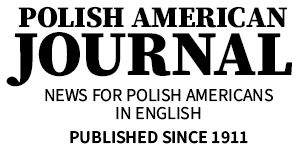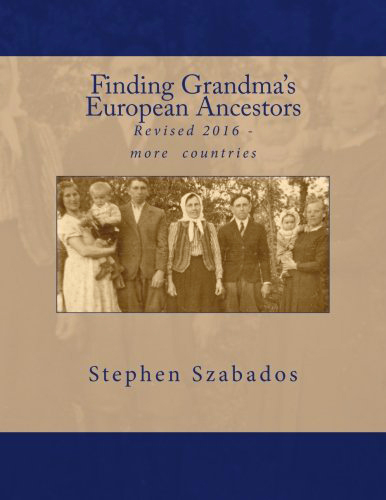
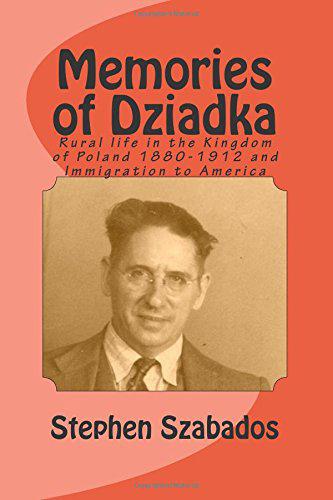

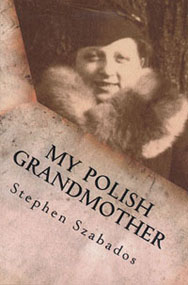
Polish Immigration to America
by Steve Szabados
Item 2-671
6 x 9, 125 pages, sc.
$17.95
When did your Polish ancestors immigrate, where did they leave, why did they leave, how did they get here? These are questions we all hope to find the answers. This book discusses the history of Poland and gives some insights to possible answers to the questions about your ancestors' immigration. All three Polish partitions are covered and the material will hopefully clear up your confusion why your Polish ancestors listed that they were born in other countries on early U.S. documents.
The book also presents brief histories of most of the ports that were used by Polish immigrants for departure from Europe and the ports where they arrived. Also covered are details of life in steerage during the voyage and the process of examination of the immigrants to gain admittance to the United States.
Stephen Szabados, is also the author of “Memories of Dziadka,” “Finding Grandma’s East European Ancestors,” and “Polish Genealogy: 4 Easy Steps.” He is a noted genealogy lecturer researcher, and a regular columnist in the Polish American Journal.
Memories of Dziadka
Rural life in the Kingdom of Poland 1880-1912
and Immigration to America
by Stephen Szabados$14.95
pb. 134 pp.
6 x 9 inches
From the author: This book is about the life of a Polish immigrant from the Russian partition of Poland. It first describes the area where he was born. The next chapter lists many facts and activities of his early life in rural Polish Russia. The third chapter describes the customs and traditions that his family celebrated as he grew to manhood. Chapter Four discusses the possible reasons for his decision to leave his family and the land of his birth. Chapter Five describes his trek across Poland and Germany to the port of Bremerhaven, his experience in the port and his voyage across the North Atlantic Ocean. The next chapter discusses his arrival in America and the process for admittance to the United States after leaving the ship. This chapter also describes his train trip from Philadelphia to Bloomington, Illinois. Chapter Seven details his life in America.
I wanted to put some of the interesting stories that I had of Polish immigrants together in one place to make it easy for other people to read and understand their hardships. My hope in writing this book is to share the information about the daily lives of the Polish people living in the rural areas of Poland.
I used my grandfather as the central figure in this book but this is not his biography. I used details of my grandfather’s life but added accounts of other people to tell a complete life story. My grandfather was not a person whose accomplishments would be in history books. However, his life is an example of a typical Polish immigrant in the early 1900s. I chose to tie all of the stories and information to one person to make this a more interesting story. I felt this method would be easier to show the impact of various events have on someone’s life.
When writing your family history, remember to “put some meat on the bones of your ancestors." They were more than the names and dates on the documents. Use the pictures in the family albums. Save and label these precious photos. Find stories that tell how they interacted with their neighbors, friends and family. Include information about social history and the events that may have impacted their lives. Ask yourself what their lives were like and find accounts that will explain their actions.
Finding Grandma's European Ancestors
Revised Edition
by Steve SzabadosItem 2-653
8.5 x 11, 210 pages, sc.
$19.95
Find your roots! This is a "must have" book for the family historian who wants to identify their European heritage. The author draws from his genealogical research experiences to describe how to find the resources that are available first to find out where your ancestors were born in Europe and then find the records that tells your family history. This new and revised edition covers genealogical research for most European countries and includes detailed practical steps that will help you find the success and the records that you need. The author uses his experiences to give tips on what to avoid and what works; how to find and use critical records; and how to use translating guides to decipher the foreign-language records. This book gives you the tools to find your European family.
Stephen Szabados, is also the author of “Memories of Dziadka” and “Polish Genealogy: 4 Easy Steps.” He is a noted genealogy lecturer researcher, and a regular columnist in the Polish American Journal.
Polish Genealogy: Four Steps to Success
by Stephen Szabados
Item 2-668
pb. 164 pp. 11 x 8.5 x 0.4 inches
$19.95
When did your Polish ancestors immigrate, from where did they leave,
why did they leave, how did they get here? These are questions we all hope to find the answers. This book is designed to give the researcher the tools needed to research their Polish ancestors and find possible answers to the origins of your Polish heritage. The book outlines a simple process that will identify where your ancestors were born and where to find their Polish records.
The author, Stephen Szabados, uses his own genealogical research experience to outline a simple process that has been successful for the author. The book lists many sources of information that will add to your family history; identify where your ancestors were born and where to find their Polish records. Traditional sources are covered but it also discusses many new and exciting sources for Polish records that have been implemented by genealogy societies in Poland. The book includes many sample documents and tips that should prove useful for both the beginner and the veteran genealogist. The information in this book covers the most up-to-date collection of sources for Polish genealogy and should prove to be invaluable when doing Polish research.
My Polish Grandmother: From
Tragedy in Poland to Her Rose Garden In America
by Stephen Szabados$14.95
Item 2-218
61 pp., b&w photos
2015
Anna was the youngest daughter of a Polish farmer and very small physically. However, she was always in command when she was in the room. This book describes the tragedies in her early life and the challenges she overcame to make a new life in America. It is different from many stories of immigrants because it is told from the perspective of a woman.
This book asks questions about her fears when growing up, immigrating to America, and making her new life. How did she face these fears? How did she overcome them? Szabados said by searching for answers, he found new insights about his grandmother.
As you read Anna’s story, ask the same questions about your ancestors. If you do, your view of your family history will definitely change.
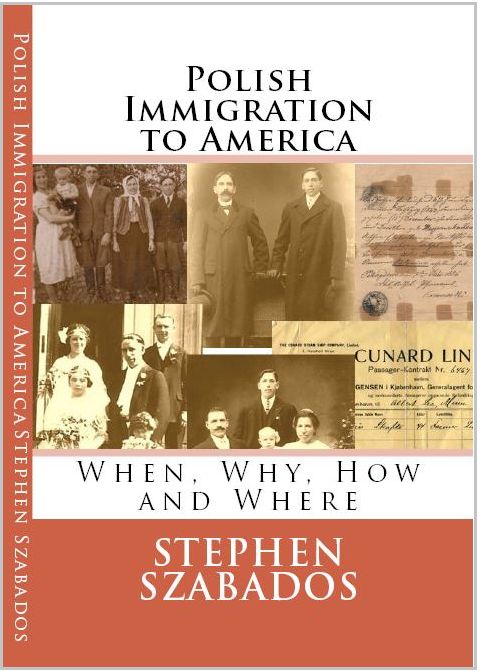
Genealogy

